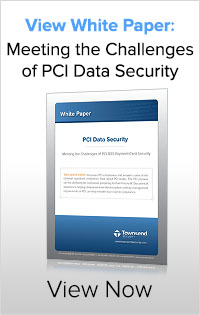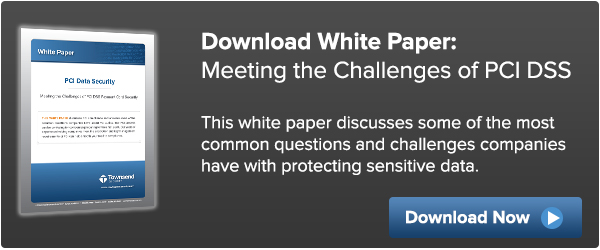This is the second part in our series looking at recent announcements by Amazon, Microsoft and others regarding new encryption and key management services. Let’s talk about the concept of segmentation as a security best practice, and as a strong recommendation by PCI DSS security standards. Since the PCI DSS guidelines implement common security best practices they are a good jumping off point for evaluating the security of any application and platform. Following the practice of the first part of this series we will use the PCI document “PCI DSS Cloud Computing Guidelines, Version 2.0” as our reference point. Even if you don’t have to meet PCI data security requirements, this should be helpful when evaluating your security posture in the cloud.

Segmentation as a security concept is very simple and very fundamental. Better security can be achieved by not mixing trusted and untrusted applications, data, and networks. This concept of trusted and untrusted applications extends to the value of the data assets – when applications process highly sensitive and valuable data assets they need to be separated into trusted and secure environments. We expend more effort and resources to protect what is valuable from criminals. Conversely, when there are no valuable data assets in an environment there is no need to take the same level of effort to secure them.
This is the core reason that PCI DSS recommends segmentation of applications that process payments from non-payment applications. Here is what PCI says about non-cloud applications:
Outside of a cloud environment, individual client environments would normally be physically, organizationally, and administratively separate from each other.
So, how do the PCI DSS security requirements relate to cloud platforms? Here is what PCI says (emphasis added):
Segmentation on a cloud-computing infrastructure must provide an equivalent level of isolation as that achievable through physical network separation. Mechanisms to ensure appropriate isolation may be required at the network, operating system, and application layers; and most importantly, there should be guaranteed isolation of data that is stored.
Proper segmentation is difficult to achieve even when you have complete control over all aspects of your environment. When you add the inherently shared and multi-tenant architecture of cloud platforms this becomes a high hurdle to get over. Here is what PCI says about this challenge:
Client environments must be isolated from each other such that they can be considered separately managed entities with no connectivity between them. Any systems or components shared by the client environments, including the hypervisor and underlying systems, must not provide an access path between environments. Any shared infrastructure used to house an in-scope client environment would be in scope for that client’s PCI DSS assessment.
This brings us exactly to the concern about new cloud key management services in Azure and AWS. These new services are inherently multi-tenant in both the key management services down to the hardware security modules (HSMs) that provide the ultimate security for encryption keys. You have no idea who you are sharing the service with.
The PCI guidance tells us what this segmentation looks like in a cloud environment:
A segmented cloud environment exists when the CSP enforces isolation between client environments. Examples of how segmentation may be provided in shared cloud environments include, but are not limited to:
- Traditional Application Service Provider (ASP) model, where physically separate servers are provided for each client’s cardholder data environment.
- Virtualized servers that are individually dedicated to a particular client, including any virtualized disks such as SAN, NAS or virtual database servers.
- Environments where clients run their applications in separate logical partitions using separate database management system images and do not share disk storage or other resources.
There is no cloud service provider implementation of key management services that meet these basic requirements.
The PCI DSS guidance takes a pretty strong view about inadequate segmentation in cloud environments:
If adequate segmentation is not in place or cannot be verified, the entire cloud environment would be in-scope for any one client’s assessment. Examples of “non-segmented” cloud environments include but are not limited to:
- Environments where organizations use the same application image on the same server and are only separated by the access control system of the operating system or the application.
- Environments where organizations use different images of an application on the same server and are only separated by the access control system of the operating system or the application.
- Environments where organizations’ data is stored in the same instance of the database management system’s data store.
Since key management systems are always in scope for PCI audit and are extensions of your application environment and depend entirely on the access control system of the cloud provider, it is difficult to see how these new cloud key management services can meet PCI DSS requirements as currently implemented.
Here’s the last comment by PCI on segmentation in cloud environments:
Without adequate segmentation, all clients of the shared infrastructure, as well as the CSP, would need to be verified as being PCI DSS compliant in order for any one client to be assured of the compliance of the environment. This will likely make compliance validation unachievable for the CSP or any of their clients.
Does this mean you can’t implement security best practices for key management in the cloud? I don’t think so. There are multiple vendors including us (see below) who offer cloud key management solutions that we believe can be effectively isolated and segmented on cloud platforms, or even hosted outside of the cloud.
In our part 3 of this series we’ll look at the topic of logging and active monitoring and how it affects the security of your key management solution in the cloud.
Patrick
Resources
Alliance Key Manager for Azure
Alliance Key Manager for VMware and vCloud
Alliance Key Manager for Drupal
Alliance Key Manager for IBM Power Systems
Alliance Key Manager Cloud HSM

